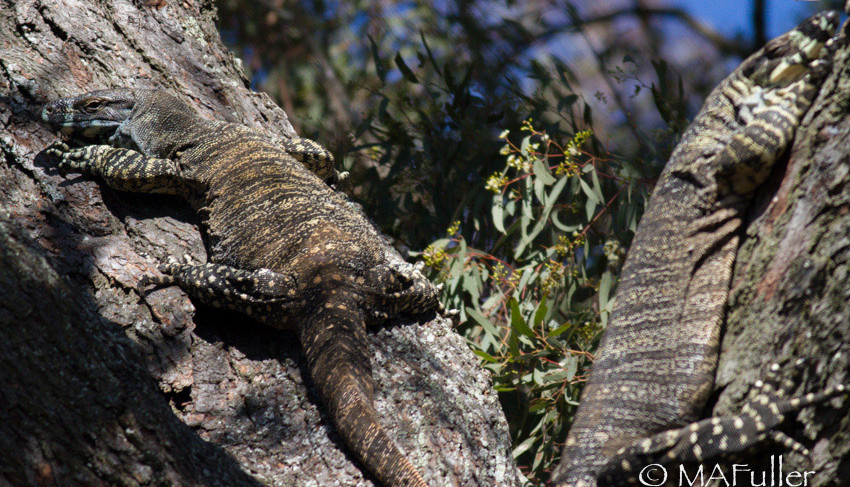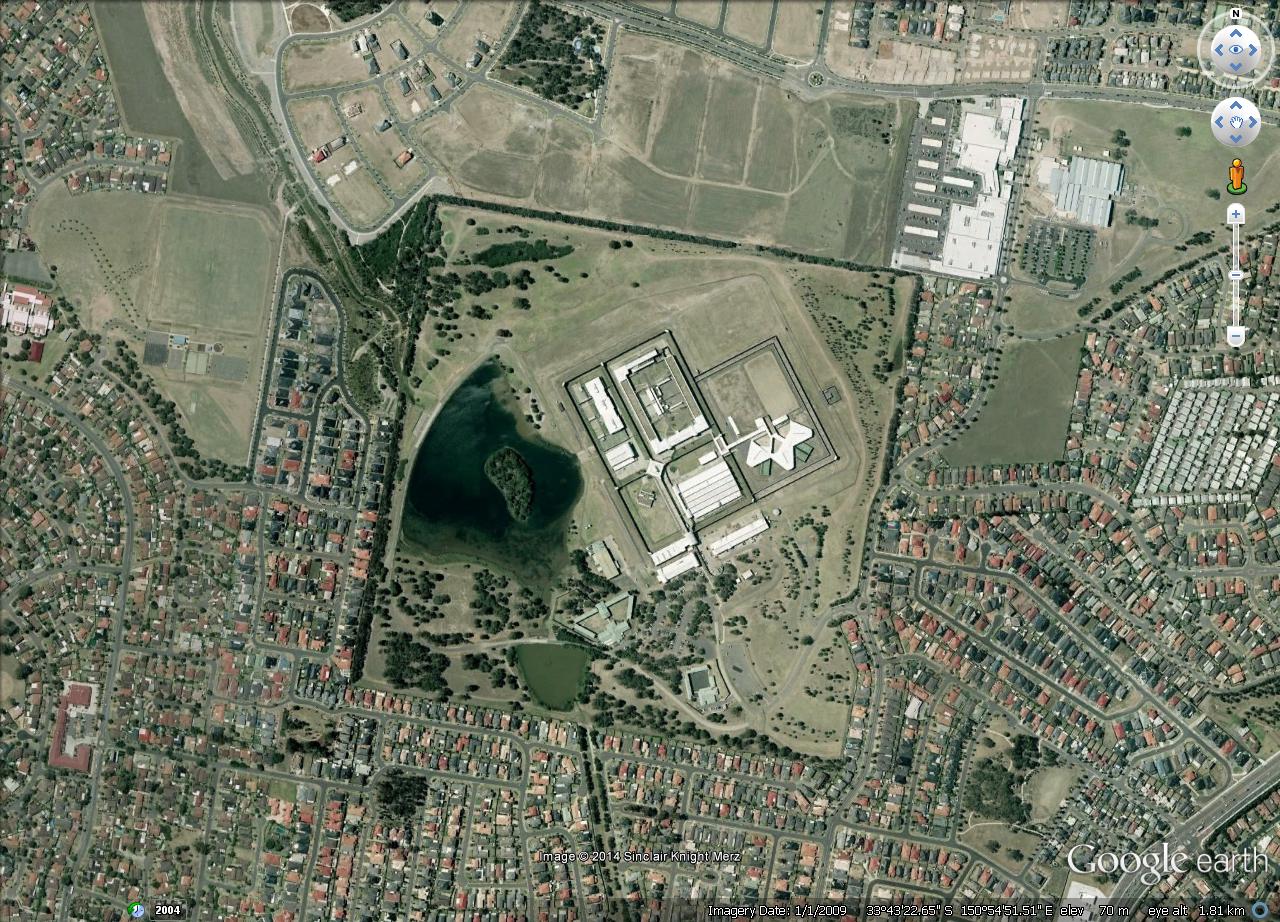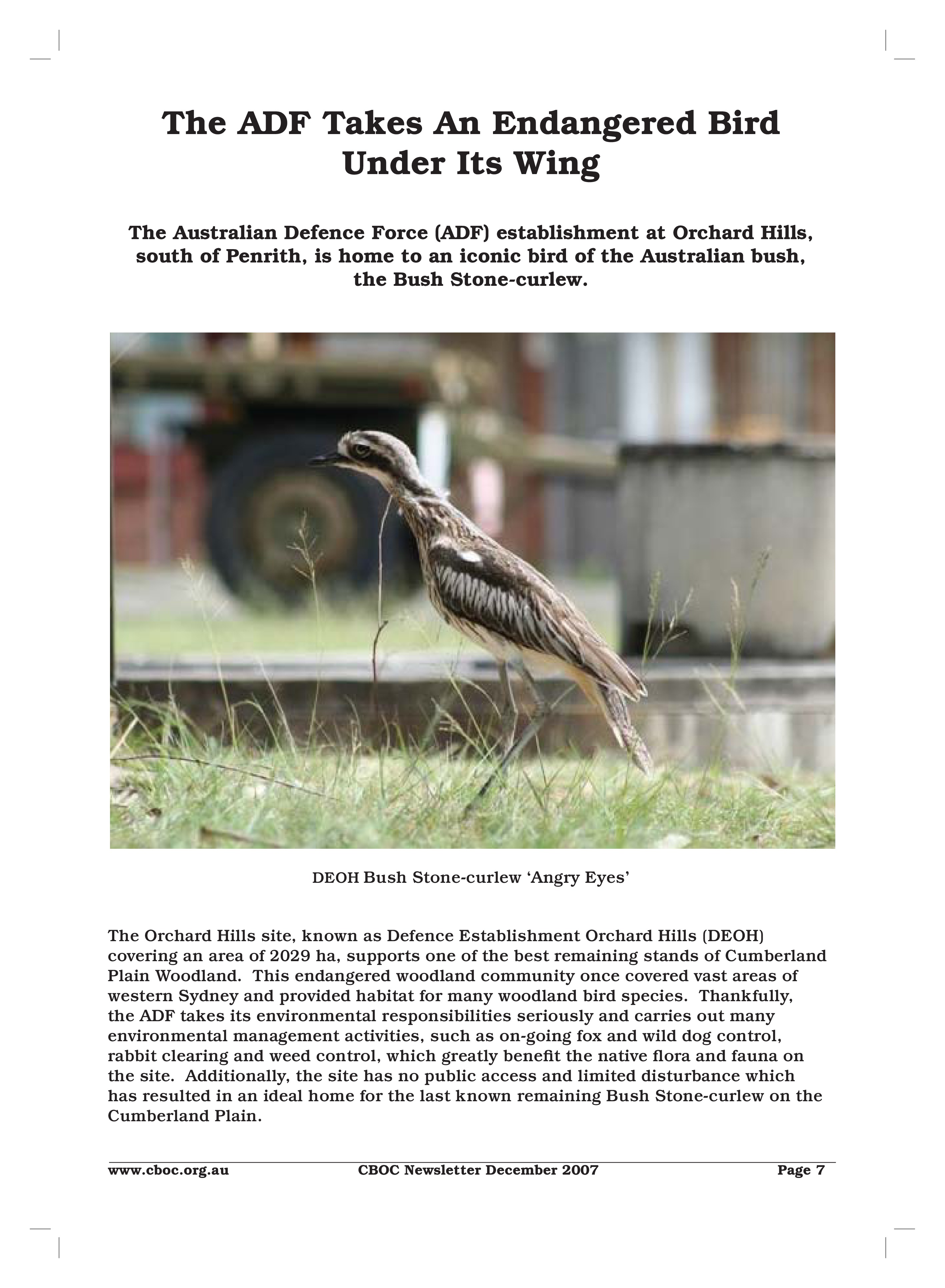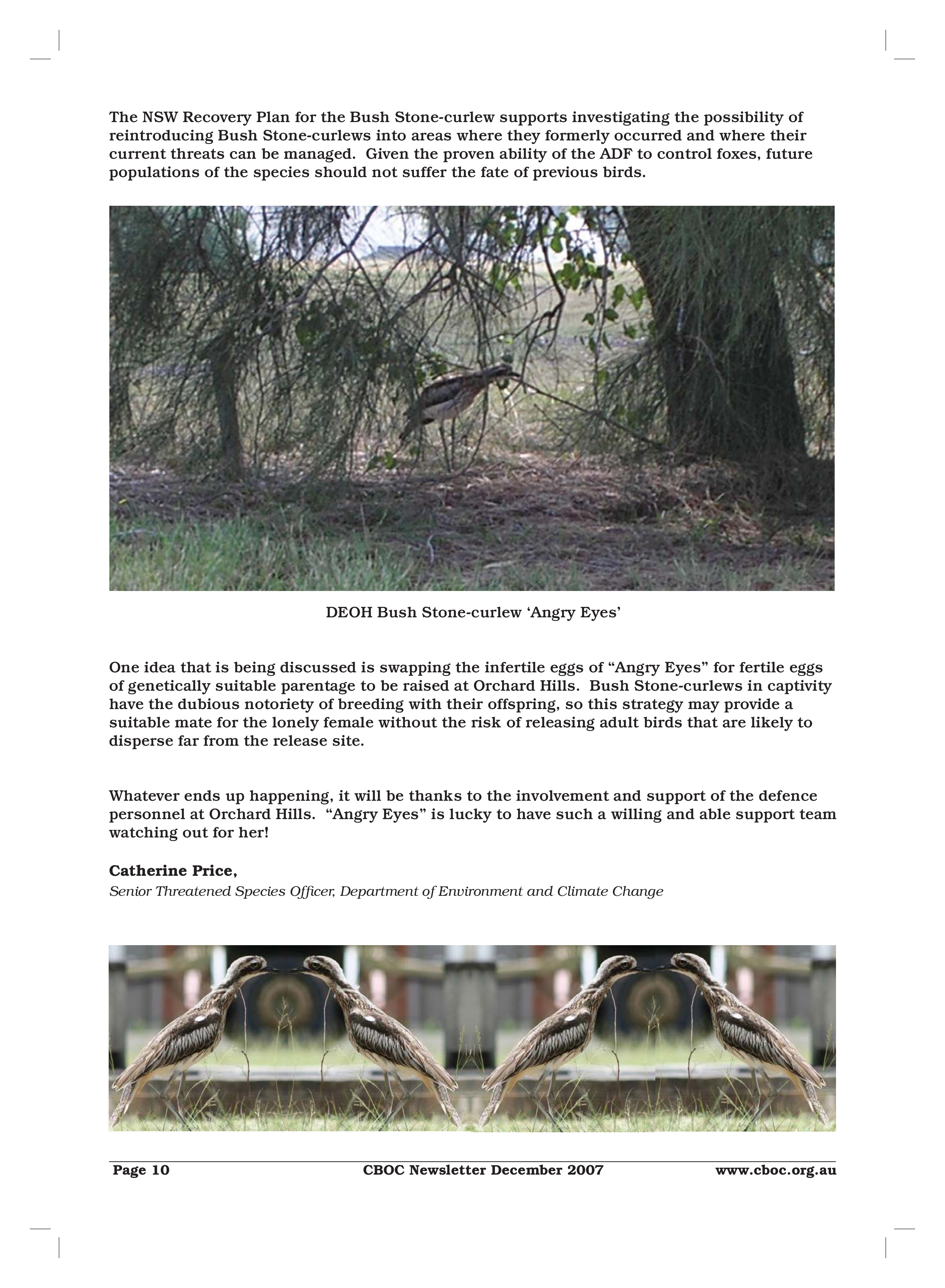Catherine Fields
The announcement by Premier Barry O’Farrell on Saturday 28 December 2013 about the release of land at Catherine Fields for over 3,000 houses gives cause for discomfort to conservationists. This writer has not walked the site but it is noted Eco Logical did the flora & fauna survey and the aerial image below indicates most of the canopy is along creeklines. Presumably, this is to be retained. As well, a recommendation was made for trees with hollows away from creeklines to be retained. Disturbingly, the site is inhabited by the TSC listed Australian Bittern yet Eco Logical has been weak in not recommending retention of the large rural dam in the centre of the site. OEH recommended retention but is not strong on it. The exhibited site plan proposed removal of the dam for housing. We don’t know as yet whether it has been retained in the final site plan:

Marsden Park North Precinct
Is Greater Western Sydney going to be worth living in? It is the target of get-rich-quick land developers at a pace never before seen. Western Sydney does not have the beaches, the harbour, the sea breeze enjoyed by those in inner Sydney or east and north of Sydney. Greater Western Sydney has only its bush – its flora & fauna – but the modern day ‘development’ mentality is determined to take that from us and leave us with a sea of concrete, bitumen and brick. The development lobby have access to government and they have their way.
Hard on the heels of the Catherine Fields Urban Development announcement is the finalisation of negotiations between land owners and the government for another urban development called Marsden Park North. These follow announcements of development in other places in South-Western Sydney such as Oran Park and Edmondson Park (to name two) and development precincts in Riverstone, Marsden Park Industrial Estate and a 10,000 house estate across the road from Marsden Park North on the former historic ‘Clydesdale’ site. Once rural settings are being obliterated.
Marsden Park North Precinct is bounded by Richmond Road, South Creek, Eastern Creek and Garfield Road West. That part of the precinct we shall now refer to is bounded by South Creek to the west & north, Richmond Rd to the south, Park Rd to the east and Eastern Creek to the east and north and it is outlined in red on the map below. We don’t know all the conservation and heritage values of the land but we do know some.
In the 19th Century St Phillip’s Church of England church building was constructed just off Richmond Rd and just short of South Creek. A cemetery was also commissioned and became the burial site for some of the Lock family through whom present day Darug people are descended. Other pioneers such as the Worboys were also buried there. A surprise to the people then and something to be noted by Planners today is that South Creek can flood exceptionally high. The wooden church building was washed away by flood long ago. Only the small cemetery with its headstones (some overgrown with grass) remains today although the Anglican Diocese of Sydney still owns the small area albeit surrounded by the large land holding of development proponent Angliss Estate (Garfied). The site is included in the LEP of the City of Blacktown as an historical site.
Along the margins of South Creek are some old growth Eucalyptus moluccana and Eucalyptus amplifolia. Also, in the floodplain of South Creek is a wealth of water birds – frequenting, inhabiting, foraging and breeding. On the eastern portion of the site and easily visible from Park Road is bushland containing abundant TSC listed Grevillea juniperina and Pultenaea parviflora. The land is habitat for a mob of at least 40 kangaroos and Lace Monitors have been seen.
A particular area adjoining and including the Angliss Estate along Park Road is identified in the City of Blacktown’s LEP because of its Aboriginal heritage significance – it is the site of a large number of Silcrete rocks & boulders. Advice from Darug elders indicates the area was a work site of early indigenous people for the making of tools, implements and weapons. A healthy Eucalyptus tereticornis at the base of the site is said to give appearance of dating back at least to the mid 19th Century and, as such, would add interpretation to the foregoing.
Here is a Google Earth image of the Angliss and MAC 1 estates we speak of:
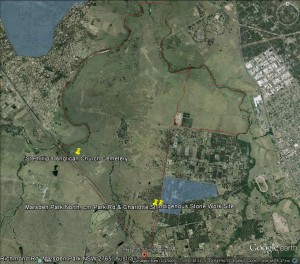
Red outline signifies approximate boundary of the currently considered Angliss Estate and MAC 1 development footprint.
We are left to await the extent of sympathy existing within development proponents and government for the natural and cultural heritage of Western Sydney and, more specifically, the City of Blacktown.
Immediately below are images of water birds observed by others on the site. Near the bottom of the gallery is the headstone of one of the Lock family buried at the site. It is that of Jane Lock, daughter-in-law of Maria Lock, sister to Colebee. Maria Lock is present day Darugs’ link to their early heritage. Other Lock family headstones (not Maria’s) are thought to be covered by grass. The final two photos present as a bushland scene said to contain 50 to 100 Silcrete boulders amid grass and leaf litter and, among the boulders, are what Darug elders say are discarded Silcrete Flakes (chips). The boulders are thought to have been ‘worked’ by early indigenous people for the making of tools, weapons and implements.


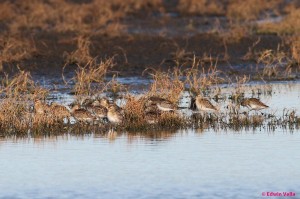
Australian Painted Snipe Sharp-tailed Sandpiper
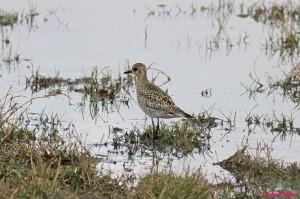

Pacific Golden Plover Australian Painted Snipe

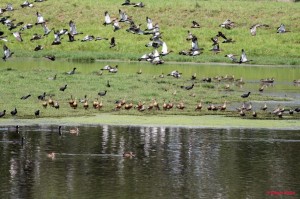
Black-winged Stilt Plumed Whistling-duck
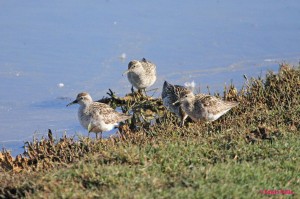

Sharp-tailed Sandpiper Assorted Water Birds


Waterfowl Gravestone of Jane Lock in Cemetery
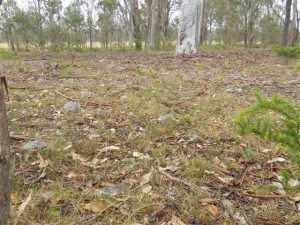

Suggested Indigenous Stone Work Site Discarded Red Silcrete ‘Flakes’ are abundant
